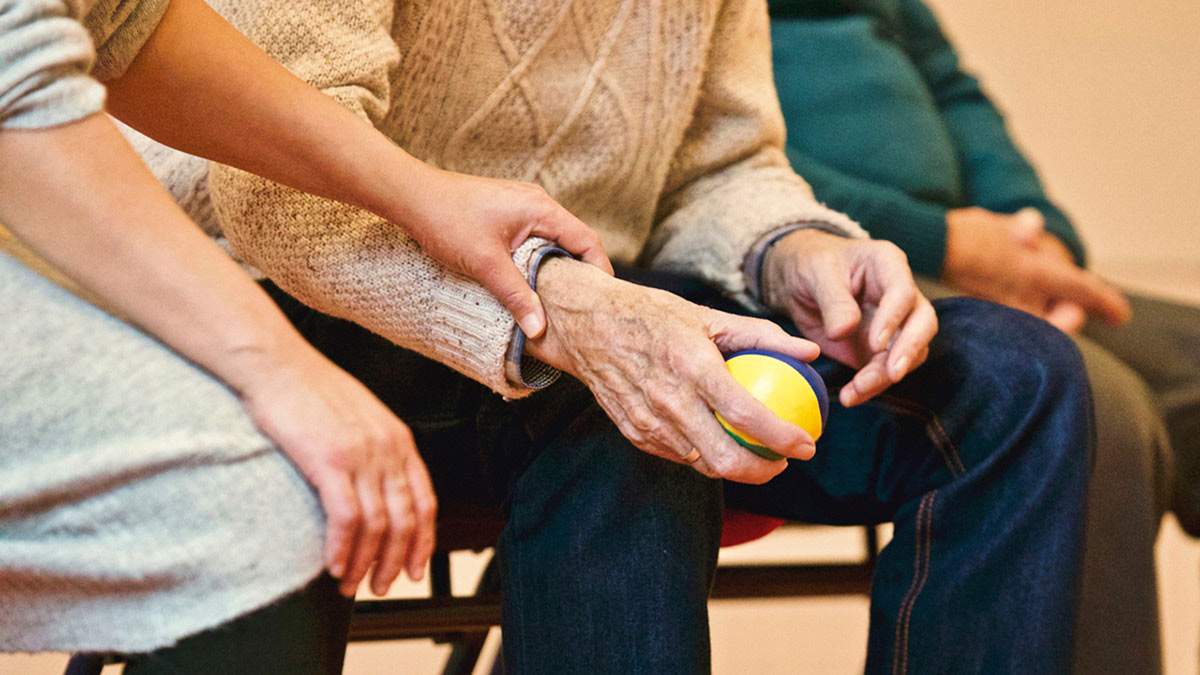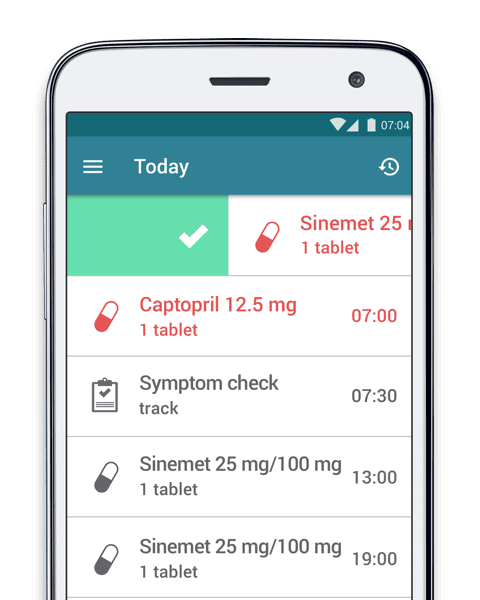In the UK an estimated 127 thousand people are living with Parkinson’s disease. In the United States, the estimate amounts to more than 1 million. This puts the disease on rank two among the neurodegenerative diseases, second only to Alzheimer’s. Motor symptoms like tremor, rigidity, bradykinesia (slow movement), postural instability (balance problems), and walking/gait problems make many everyday tasks hard to impossible for those affected.
Non-motor symptoms like sleep problems, fatigue, depression/anxiety and gastrointestinal issues further impact Parkinson’s patients’ quality of life. However, new inventions, medicines and special therapies and digital innovations such as apps can help patients to make their lives better and more independent. Such innovations are not always known to those affected or their caregivers. That is why we take World Parkinson's Day 2017 as an occasion to share some recent innovations that can improve the life of Parkinson's patients.
Clever Walking Sticks: They Call For Help and Work Against Freezing
Suddenly, you can no longer move, almost freezing in place, a situation that many Parkinson's patients know only too well. Special walking sticks have been invented to help! The Walk to Beat, which is still in development, is intended to make it easier for Parkinson's patients to walk. An important tool for those in an advanced stage, where gait problems and freezing are common. The walking stick detects such moments and emits vibrations that are similar to the normal walking speed of the user. This rhythm is designed to help patients regain their pace, motivating them to put one foot in front of the other. The Smart Cane SmartCane, from the French start-up company Dring, takes a slightly different approach. The walking stick is equipped with various motion sensors and thus detects when it is not moved for an unusually long time or the user drops. Immediately, family members or carers are advised to come to their aid. Dring has also developed a shoe with similar functions. For both, not even a smartphone is necessary, since the devices are connected with GMS (Global System for mobile Communication) and GPS.
Smart Clothing For Parkinson's Patients’
Active Protective have developed a safety belt that can automatically detect a fall, deploying an airbag to protect the wearer from serious injury. Smart sensors release the airbag within seconds before the wearer hits the ground.
Elasticated shoe laces are another helpful innovation, also beyond people living with Parkinson’s. Turn your lace-up shoes into slip-on footwear to save yourself the difficulty of tying shoes with trembling hands. Such shoelaces must simply be tightened, which means no more complicated loops! Thanks to these laces, the velcro shoes can remain in the closet.
Steady Spoons And Other Tremor-Compensating Tableware
Motor disturbances and trembling hands can also make everyday things like eating a challenge. Intelligent cutlery like the one by GYENNO is easy to handle thanks to the ergonomic handle and can be used with an attachment as a spoon or fork. GYENNO senses the trembling and balances it by counter-movements. Not only at home, but also in the public, independent eating is again possible for Parkinson's patients. Drinking is also facilitated by a special cup. NoSpill was developed by Mileha Soneji, a Parkinson’s caregiver who wanted to support her uncle in dealing with the disease.
Outlook: Shiver-Free Writing Through Vibrating Pens?
Not only in essential activities such as eating, but also in writing, the experience of patients who suffer from tremors can be considerably restrictive. Problems with fine motor skills are typical for Parkinson's disease. It also affects a patient’s writing style, typically becoming smaller and smaller. Currently, still in development, vibrating pens aim to counteract micrograph. Vibrations stimulate the hand muscles, which loosens the muscles and makes the handwriting legible again. Similarly, a bracelet with vibrating motors, designed specifically for Emma Lawton compensates for the trembling movements. The bracelet is not on the market yet, though such developments provide hope that other Parkinson's patients can also be helped.
Apps For Parkinson’s Medications And Exercises
Exercises for movement training and tools for rhythmic speech are also integrated into the app. An app that records various symptoms and the course of the disease for research purposes is mPower. Users are asked to perform various tasks, answer questions, and track the course of the disease. From the data obtained, scientists are hoping to improve the treatment of Parkinson's disease. MyTherapy, app for Parkinson’s and other chronic diseases, is a medication reminder while also helping to observe the course of the disease and remain physically active. The health journal can easily be shared with a doctor or neurologist for review, so needs for adjustment can be identified
New Parkinson’s Medications: The Promise Of A More Normal Life
To date, the treatment of Parkinson's disease has focused on alleviating the symptoms in order to defend the quality of life of those affected. Meanwhile, however, there has also been a lot of research on drug discovery. Parkinson's causes nerve cells to die in the brain that form dopamine, leading to symptoms such as tremors, stiffness, balance disorders, bradykinesis and agitation. New medicines are supposed to boost dopamine levels. An example of this is Ongentys that launched in October 2016. Its active ingredient, Opicapone, inhibits the activity of the enzyme COMT, which promotes dopamine degradation.
Also, Nilotinib, a drug used to date against leukemia, could be a breakthrough in Parkinson's disease, improving motor skills and slowing disease progression. Corresponding research projects are supported by the Michael J. Fox Foundation. Other researchers hope to cure the disease completely with stem cell treatment. For this purpose, stem cells, which do not yet have any specific functions, would be transformed into cells that produce dopamine and replace the infected brain cells. This form of treatment is still in the experimental phase, though it gives hope, just like everything else we have mentioned in this article. Hope for a greater quality of life for Parkinson’s patients and motivation for those who are newly diagnosed.




